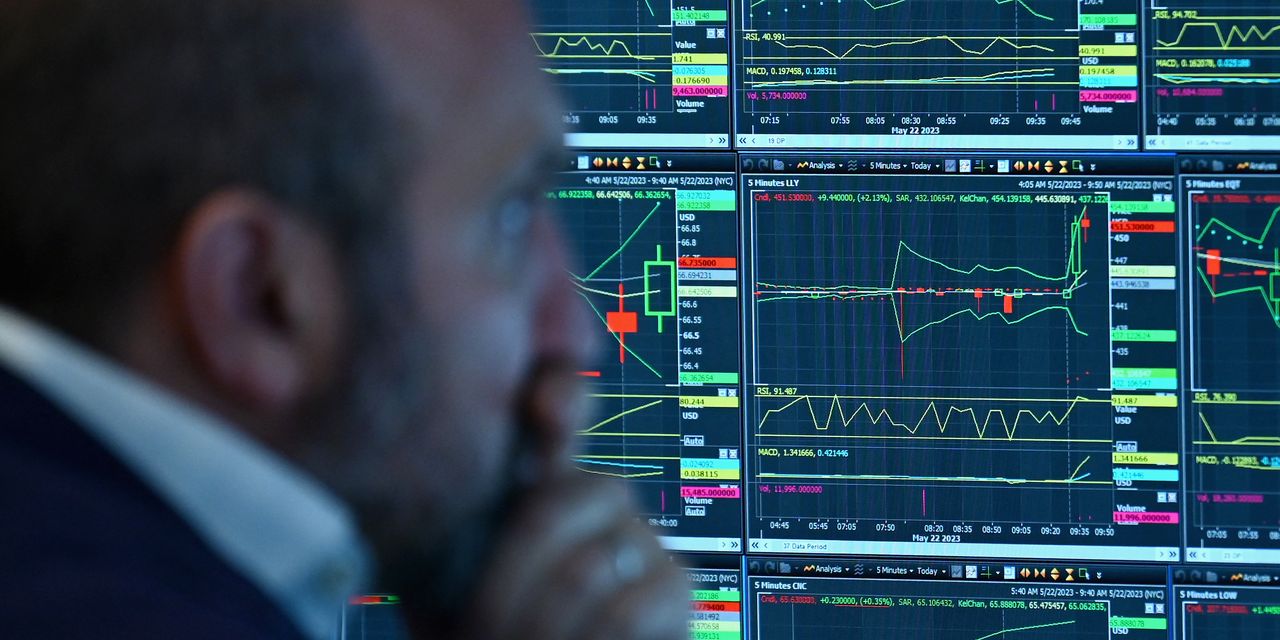Stocks have had a great year, seemingly against all odds. The question is whether investors should keep taking their chances on more gains.
After a painful 2022, on the surface, few headwinds seem to have eased this year. The Federal Reserve has swiftly raised interest rates while inflation continues to pressure consumers. Meanwhile, per-share earnings expectations for
S&P 500
companies have come down. In addition, 2023 has brought new worries, including increasing geopolitical risks, the regional banking crisis, and a debt-ceiling showdown.
Nonetheless, the market has chosen to focus on the positive, like the expectation that the Fed will eventually put its rate hikes on pause, signs of cooling inflation, and relatively strong employment numbers—despite high-profile white collar layoffs. The S&P 500 has jumped more than 9% so far this year, while the
Nasdaq
Composite’s gains are nearing 22%.
That has left plenty of cautious investors with FOMO—or fear of missing out—notes Société Générale Head of U.S. Equity Strategist Manish Kabra, including his own firm. He notes his core allocations favor categories that have lagged behind stocks, like bonds and commodities.
Nonetheless, there’s reason not to chase the rally, he writes, “as one can still debunk the bullish arguments.”
First, while many companies beat earnings expectations this season, that was due in no small part to lowered expectations coming into the quarter, he writes. And although it’s true that stocks are outperforming every other asset class, that surge is thanks to a very small group of winners. That leaves the stock market especially vulnerable if those top performers stall.
Another reason not to jump in: Stocks look pricey when judged on a number of metrics like price-to-earnings, price-to-book value, and price-to-sales. In fact, the rally in stocks means the market has gotten ahead even of the contrarian positive positioning that has dominated in recent months
Kabra also says the impact of the Fed’s tightening regime will continue to play out even if the market does get a pause, as the impact on the economy lags behind the central bank’s actions.
If anything, he says, investors should be hoping for disinflation sooner rather than later. That would clear the decks for a resumption of gains for more than just a sliver of stocks: “A mild recession is needed to kick-start a secular bull-run in U.S. stocks.”
That leads him to advise investors not to “sweat the rally—the S&P 500 is likely to stay in 3500-4200 range while credit risks and bond volatility pick up again.”
Kabra isn’t the only voice arguing that the rally looks precarious. Although some analysts seem worries about the back half of the year have decreased lately on questions about whether or not a recession will ever arrive, other strategists also say there’s reason to believe the market will largely tread water after a strong first- and second-quarter showing.
That said, the market has defied bearish expectations for nearly six months, and could continue to punish skeptics if that trend continues. However it seems the path to doing so will looking increasingly impassable to some.
Write to Teresa Rivas at [email protected]
Read the full article here




